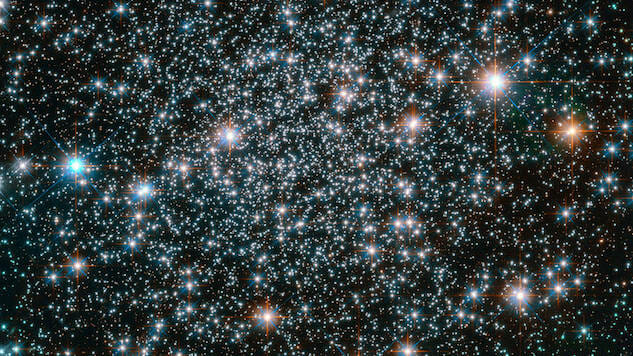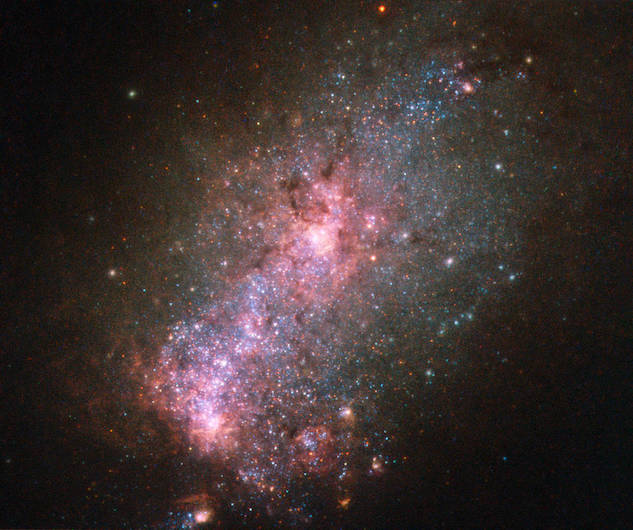
Space Matter is a weekly column that delves into space science and the mechanics of spaceflight. From the latest discoveries in the universe around us to the fits and starts of rocket test flights, you’ll find analysis, discussion and an eternal optimism about space and launching ourselves into the cosmos.
![]()
There’s a lot that we do and don’t know about dark matter. For instance, we know it is a matter we can’t measure directly. But, dark energy is a different matter (pun not intended) altogether.
Here’s what we know: There’s some form of energy that exists everywhere and it’s the driving force behind the acceleration of the universe’s expansion. (Remember that when we say the universe is expanding, we mean that the components within it are moving further from one another. The universe itself cannot expand because it is infinite, as far as we know). We also theorize, with reasonable certainty, that dark energy composes roughly 70% of the energy that exists within the universe.
That’s where the agreement on what dark energy’s properties are ends for the most part (it’s worth nothing that not all scientists even agree with that). Dark energy is a strange and mysterious force that we don’t really understand, so much so that scientists were genuinely shocked when it was first discovered in the 1990s. But how do we know it’s there?

The Andromeda constellation. Photo courtesy of ESA/Hubble & NASA
In 1929, Edwin Hubble discovered that the universe was expanding. Specifically, he observed a redshift in the spectrum of deep space objects and was able to determine the relationship between the distance of, say, a galaxy and the speed with which it’s moving away from us. He found that galaxies that were further away were moving away from us more quickly than closer objects, and that the relationship is linear.
Hubble’s law tells us three simple things: (1) Our galaxy is expanding. What’s more, (2) the universe is expanding. We can (3) use the redshift of a galaxy, which is easily measured, to determine the distance the galaxy is from us, because these are proportional. In his equation, Hubble also created a constant (now called, creatively, the Hubble Constant) that described the expansion of the universe.
As a result of this, scientists were able to take a look at the Doppler shift of a deep space object, obtain its velocity, and solve a simple equation to determine how far it is from us.
In the late 1990s, though, scientists discovered something odd about a kind of supernova called type 1a. These are supernovae that can only occur within a binary star system, and one has to be a white dwarf. White dwarfs are incredibly dense, and as a result, a white dwarf in a binary star system will cannibalize its companion star. Eventually, as it takes on more and more matter, it will begin to collapse and then explode. That explosion is a supernova.

A type 1a supernova, the bright spot on the lower left o the image, on the outskirts of a galaxy. Photo courtesy of High-Z Supernova Search Team, HST, NASA
Type 1a supernovae are what we call standard candles—objects in space that emit a luminosity, or total amount of energy, that is standard. It doesn’t change. We can look at one of these supernovae and immediately know its luminosity. We can use that, then, to easily calculate its distance—the brighter they are, the closer to us they are.
But let’s remember Hubble’s law: We can also measure distance through redshift. There’s a straight relationship between how far a thing is away from us and how fast it’s moving. The distances measured from Hubble’s law and the standard candle luminosity should have been identical. They weren’t. Scientists discovered that these supernovae were further away than they should have been.
This presented one of two problems: Either the supernovae weren’t the standard candles we thought they were, or there’s an issue with Hubble’s law, the implication of which is that there was a problem with our understanding of the universe.

The core of a galaxy. Top photo courtesy of ESA/Hubble & NASA, Acknowledgement: Judy Schmidt
In the end, we discovered that the issue isn’t just that the universe is expanding; it’s that the rate of expansion is accelerating as well. Not only is that galaxy you can see through a telescope moving away from us, but it’s fleeing faster and faster from us every day.
But what could cause that? It’s one thing for the universe to be expanding; it’s another for that rate of expansion to be accelerating. Something that we can’t see or directly measure has to be causing that. And whatever it is, it’s a gravity repellant—gravity would bring these galaxies closer and closer together. This force acts against gravity itself. The term that scientists use to explain this force is dark energy.
We still don’t understand dark energy. And with every discovery we make, we’re having to constantly reevaluate our understanding of the universe. Remember Hubble’s constant? Scientists have been trying to refine and determine its value for decades. Earlier this year, a group of astronomers discovered that the universe may actually be expanding too fast to fit our model of the universe. This has implications that go way beyond dark energy—and might be fodder for another column. The bottom line is that there’s still a lot we don’t know about dark energy, but everything we learn about it—and the expansion of the universe—has far-reaching implications for our understanding of how we got here and our place in the universe.
Top photo courtesy of NASA
Swapna Krishna is a freelance writer, editor and giant space/sci-fi geek.